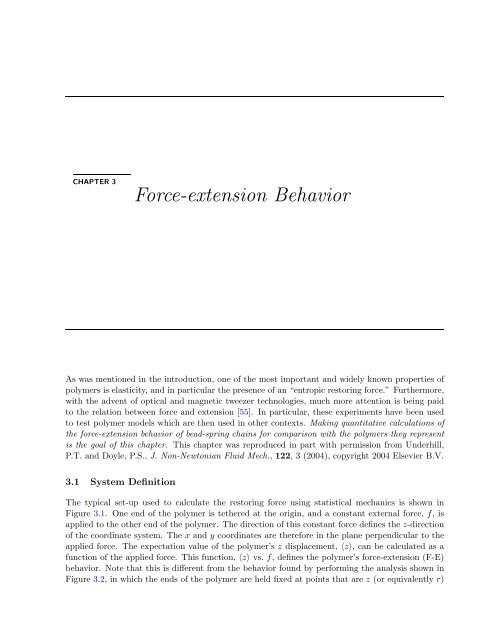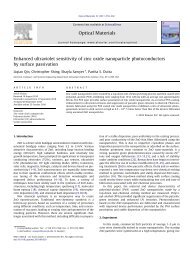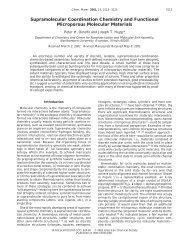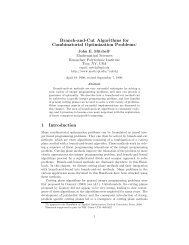Systematic development of coarse-grained polymer models Patrick ...
Systematic development of coarse-grained polymer models Patrick ...
Systematic development of coarse-grained polymer models Patrick ...
You also want an ePaper? Increase the reach of your titles
YUMPU automatically turns print PDFs into web optimized ePapers that Google loves.
CHAPTER 3<br />
Force-extension Behavior<br />
As was mentioned in the introduction, one <strong>of</strong> the most important and widely known properties <strong>of</strong><br />
<strong>polymer</strong>s is elasticity, and in particular the presence <strong>of</strong> an “entropic restoring force.” Furthermore,<br />
with the advent <strong>of</strong> optical and magnetic tweezer technologies, much more attention is being paid<br />
to the relation between force and extension [55]. In particular, these experiments have been used<br />
to test <strong>polymer</strong> <strong>models</strong> which are then used in other contexts. Making quantitative calculations <strong>of</strong><br />
the force-extension behavior <strong>of</strong> bead-spring chains for comparison with the <strong>polymer</strong>s they represent<br />
is the goal <strong>of</strong> this chapter. This chapter was reproduced in part with permission from Underhill,<br />
P.T. and Doyle, P.S., J. Non-Newtonian Fluid Mech., 122, 3 (2004), copyright 2004 Elsevier B.V.<br />
3.1 System Definition<br />
The typical set-up used to calculate the restoring force using statistical mechanics is shown in<br />
Figure 3.1. One end <strong>of</strong> the <strong>polymer</strong> is tethered at the origin, and a constant external force, f, is<br />
applied to the other end <strong>of</strong> the <strong>polymer</strong>. The direction <strong>of</strong> this constant force defines the z-direction<br />
<strong>of</strong> the coordinate system. The x and y coordinates are therefore in the plane perpendicular to the<br />
applied force. The expectation value <strong>of</strong> the <strong>polymer</strong>’s z displacement, 〈z〉, can be calculated as a<br />
function <strong>of</strong> the applied force. This function, 〈z〉 vs. f, defines the <strong>polymer</strong>’s force-extension (F-E)<br />
behavior. Note that this is different from the behavior found by performing the analysis shown in<br />
Figure 3.2, in which the ends <strong>of</strong> the <strong>polymer</strong> are held fixed at points that are z (or equivalently r)







